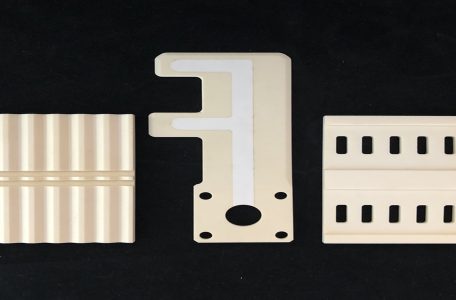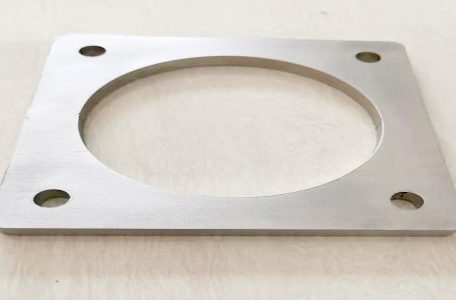The basic requirements for insulating ceramics are small dielectric constant, low dielectric loss, high insulation resistivity, high electrical strength, high mechanical strength, good thermal shock resistance, stability of humidity and frequency, etc., then the role of insulating ceramics And what are the characteristics? Next, Pintejin Ceramics will introduce to you. Insulating ceramics can be used to manufacture insulating parts of ultra-high frequency and high-power electric vacuum devices, as well as ceramic shells of vacuum condensers, ceramic components of microwave tube transport windows and various ceramic substrates. Soap porcelain uses natural mineral talc as the main raw material, and then stubbornly becomes the most important crystal phase of ceramics, Read more
Blog
Alumina ceramics have high hardness, high strength, insulation, wear resistance and corrosion resistance. They are widely used in machinery manufacturing, aerospace, petrochemical and other fields. Next, Pintejin Ceramics will introduce the characteristics of alumina ceramic injection molding. . Features of Alumina Ceramic Injection Molding 1. The alumina ceramic molding body has high strength and can be machined into parts with complex shapes. Due to the action of organic polymers, the strength of the body is 20-40MPan. The parts with this strength can be processed in various ways.As a result, parts with more complex shapes, more accurate dimensions and smoother surfaces can be processed, so the process reduces the production Read more
The molding process of zirconia ceramics has always been a very important step, so the requirements for the slurry are also very strict, which will determine the performance of the ceramic after machining. The following are the main requirements of Pintejin Ceramics for the slurry. Zirconia ceramic forming refers to adding an appropriate amount of water or organic liquid and a small amount of electrolyte to the powder to form a relatively stable suspension, and injecting the suspension into a plaster mold to absorb water to achieve the purpose of forming. The key to forming zirconia ceramic slurry is to obtain a good slurry, and its main requirements are: ①Good Read more
Grouting is actually the earliest molding method used for alumina ceramics. Because it mainly uses gypsum molds, it will be cheaper in cost and easier to shape. Even if the size and shape are more complex, it is easier to shape, but The most critical thing for grouting is the production equipment of alumina slurry. Normally, water is used as the main medium of the solvent, and then the binder and debonding agent will be added. After sufficient grinding, the air is exhausted. Pour it into a plaster mold. The capillary of the gypsum mold will absorb the water, and the slurry will be solidified in the gypsum mold relatively Read more
In the production process of zirconia ceramics, energy is mainly consumed in the links of spray drying and pulverizing, semi-finished product drying and roller kiln firing. Therefore, improving the energy utilization efficiency of these three links is the main way to save energy in industrial ceramics manufacturers. Among them, the energy saving in the firing process of the roller kiln is the most critical. Pintejin Ceramic Factory will give a brief introduction to its energy-saving technology. (1) Select raw materials Raw materials are an important basis for industrial ceramic production. For large-scale industrial production, the performance of raw materials is required to meet production needs, with stable quality and Read more
Zirconia ceramics is a special ceramic material emerging in recent years. It has phase transformation toughening and micro-crack toughening, so it has high strength and toughness, and is known as “ceramic steel”. Zirconia has the highest fracture toughness of all industrial ceramics. Using the excellent room temperature mechanical properties of zirconia ceramics to optimize the zirconia formulation and process, a fine-grained zirconia ceramic with high hardness, high strength and high toughness is obtained. High hardness, high strength and high toughness ensure that zirconia ceramics have incomparable wear resistance compared with other traditional structural ceramics. Fine-grained zirconia ceramics can be processed to obtain very low surface roughness (<0.1um). Therefore, the friction Read more
Ceramic nozzle is a very common type of sprinkler in agricultural sprinkler facilities. This nozzle has good wear resistance and good chemical resistance, and is very popular. So what factors will affect the use of ceramic nozzles? Next, Pintejin Ceramics will introduce to you. Ceramic nozzles require maintenance, regular inspection, cleaning and even replacement in order to maintain the quality of the final product and maintain the economics of the production process. The manner and frequency of maintenance procedures depends on the application, and the maintenance schedule can be arranged according to the application, liquid and nozzle material. Reasons affecting the use of ceramic nozzles 1. Corrosion and wear: The Read more
Alumina special ceramics have excellent comprehensive performance, thermal conductivity, insulation, heat dissipation, high temperature resistance, and high pressure resistance. Next, Pintejin Ceramics will introduce the uses and application fields of alumina special ceramics. Application of alumina special ceramics Sapphire is a single crystal of alumina special ceramics, also known as corundum. As an important technical crystallization, sapphire has been widely used in many fields of science and technology, national defense and civil industries, and the use of alumina special ceramics (accessories in the electronics industry). Application fields of alumina special ceramics 1. Application of multi-chip encapsulated alumina special ceramics: The manufacturing methods of nano-alumina special ceramic multilayer substrates for encapsulation Read more
The tetragonal zirconia ceramic polycrystal has high strength and fracture toughness, but a certain stabilizer must be added in the preparation process to maintain the high performance of TZP. Below, Pintejin Ceramics Factory will introduce the tetragonal zirconia polycrystal and the How to keep its high performance. The grains of this ceramic material are very small. In order to keep the metastable tetragonal phase, ultra-fine and high-purity zirconia powder must be used, and the Y2O3 content must be accurately controlled. °C). alumina ceramic tube Tetragonal zirconia ceramics (TZP) have high strength and fracture toughness through transformation toughening, but at medium and high temperature due to the gradual disappearance of transformation Read more
Ceramic blades have different names according to different shapes, such as round ones, also known as round ceramic blades. Usually zirconia ceramics or alumina ceramics, the following is a round ceramic blade introduced by Pintejin Ceramics Factory. Circular ceramic blades, also known as ceramic cutters, are widely used in industry, so what are their advantages? First, hard milling with round ceramic inserts can help mold shops reduce production costs in a number of ways. First, you can replace multiple processes with one process. When using round ceramic inserts for hard milling, the steel can be quenched first, and then the workpiece can be milled in the hardened state, thereby replacing Read more

Ceramic Machining Industry
- Ceramic Flange
- Ceramic Nozzle
- Ceramic Pin
- Ceramic Plunger
- Ceramic Rod
- Ceramic Shaft/Ceramic Sleeve
- Ceramic Structure Parts
- Ceramic Valve
- Ceramics Cutter
- Electronic Ceramics
- Medical Food Ceramics
- Petrochemical Ceramics
- Photovoltaic Ceramic
- Semiconductor Ceramics
- Microporous Ceramic Suction Cup
- Lithium Battery Ceramic Pump









